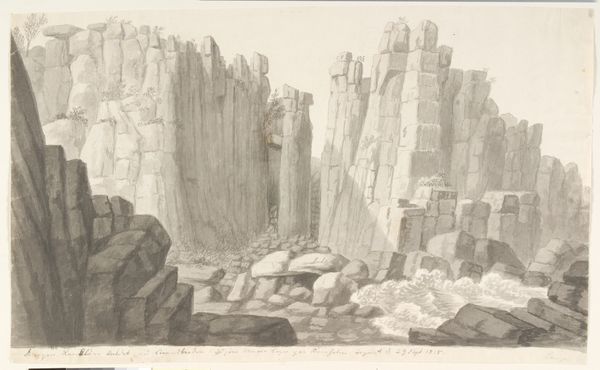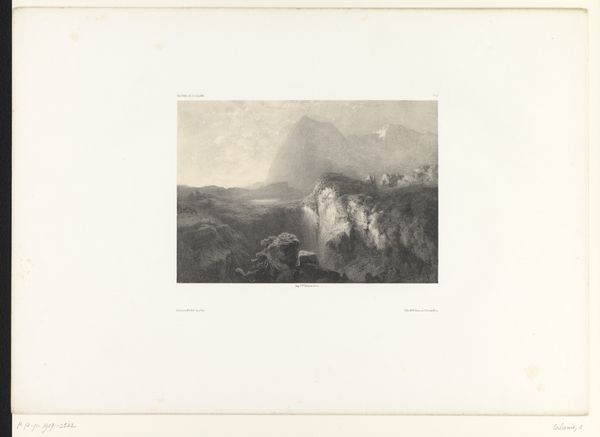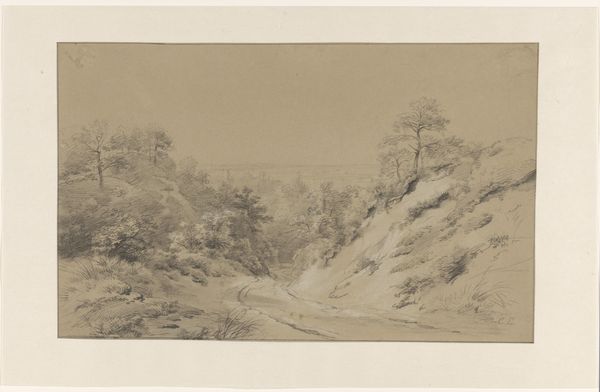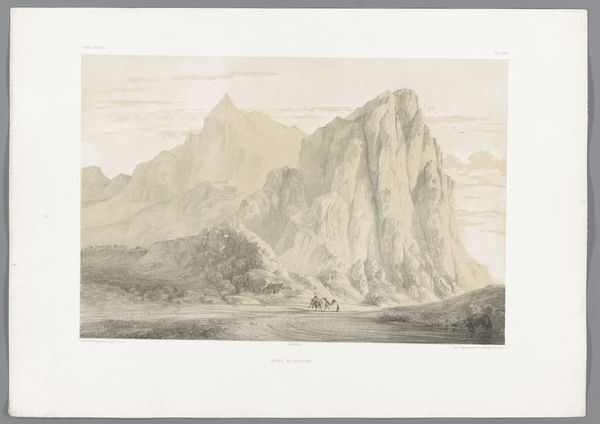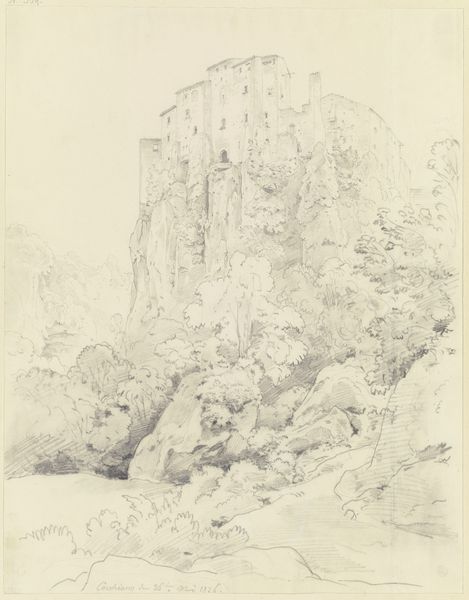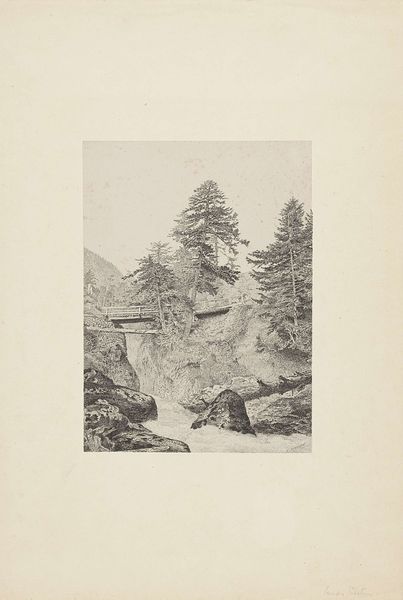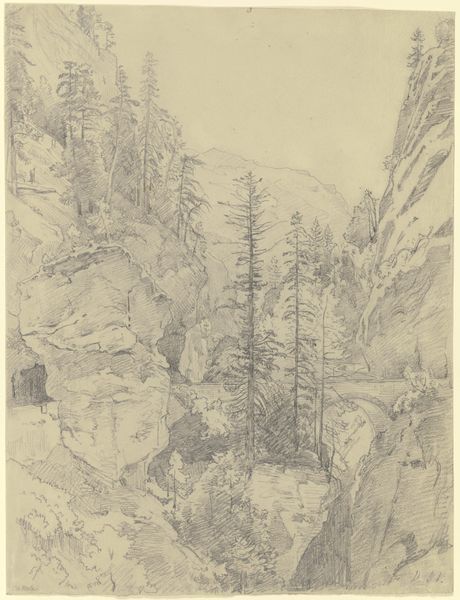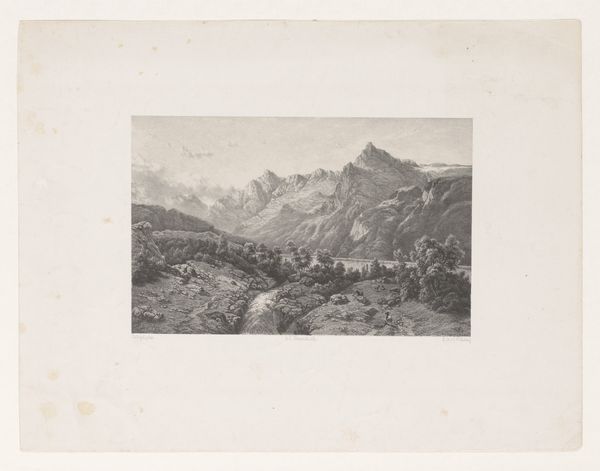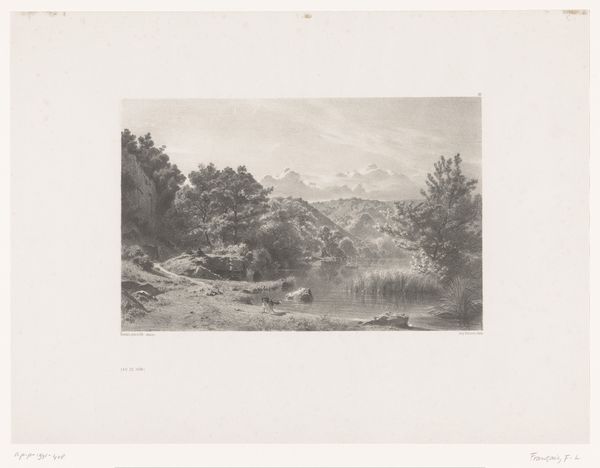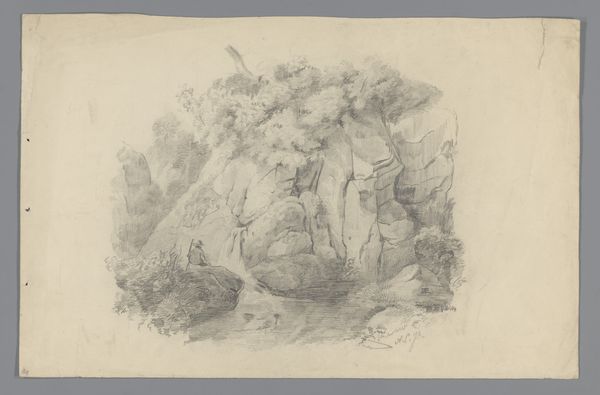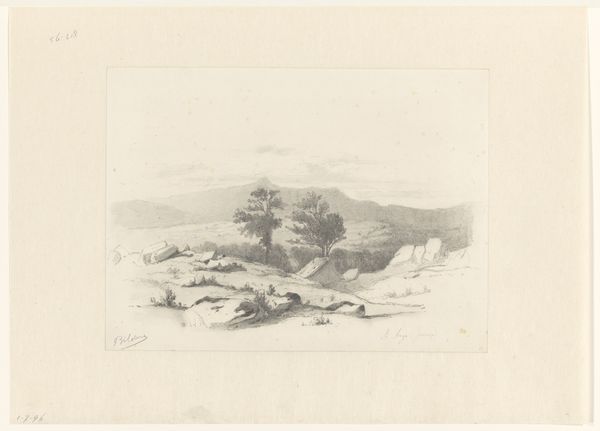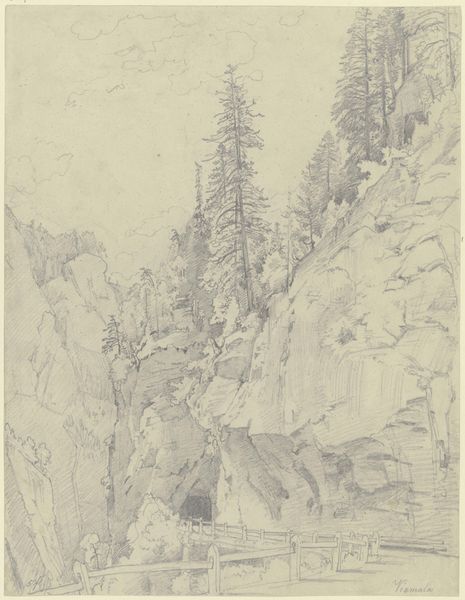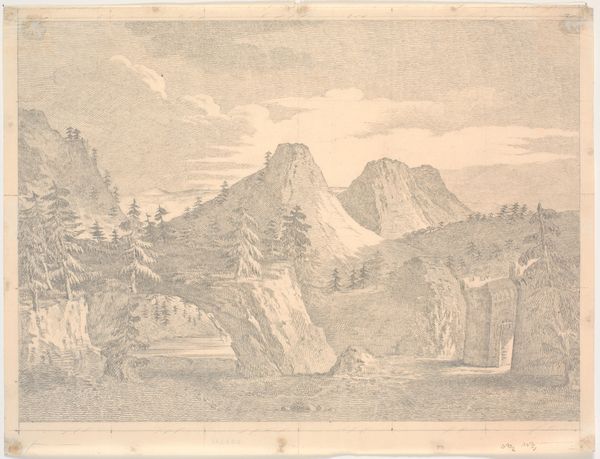
drawing, pencil
#
drawing
#
landscape
#
romanticism
#
pencil
Dimensions: height 510 mm, width 678 mm
Copyright: Rijks Museum: Open Domain
Editor: This is "Landschap met begroeide rotsen" or "Landscape with vegetated rocks," by Hendrik Voogd, dating sometime between 1778 and 1839. It's a pencil drawing currently housed at the Rijksmuseum. It's a very serene scene. What do you see in this piece that stands out to you? Curator: Immediately, I see the romanticism style, an era deeply entangled with notions of the sublime and the untamed power of nature. How might we consider this through the lens of colonial expansion and its impact on the environment? Voogd, a Dutchman in Italy, portrays nature as both refuge and spectacle. Editor: That's interesting, a "refuge and spectacle," what do you mean? Curator: Well, consider the drawing’s creation alongside the exploitation of natural resources globally. This picturesque landscape serves, perhaps, as a form of escapism or even a commentary on the very real environmental costs often obscured within idealized depictions of nature. How do you think this representation engages with contemporary issues like climate change or ecological justice? Editor: So, you're saying the beauty could mask a more complex story about our relationship with the land? It's not just a pretty picture? Curator: Precisely. We should look beyond the surface and investigate art’s participation in broader socio-political dialogues. It compels us to challenge simplistic notions of beauty and progress. The sublime has implications! Editor: I'd never thought about it like that. I'm going to rethink the Romanticism section in my textbook! Thanks! Curator: Likewise. We have unpacked some assumptions today!
Comments
No comments
Be the first to comment and join the conversation on the ultimate creative platform.

